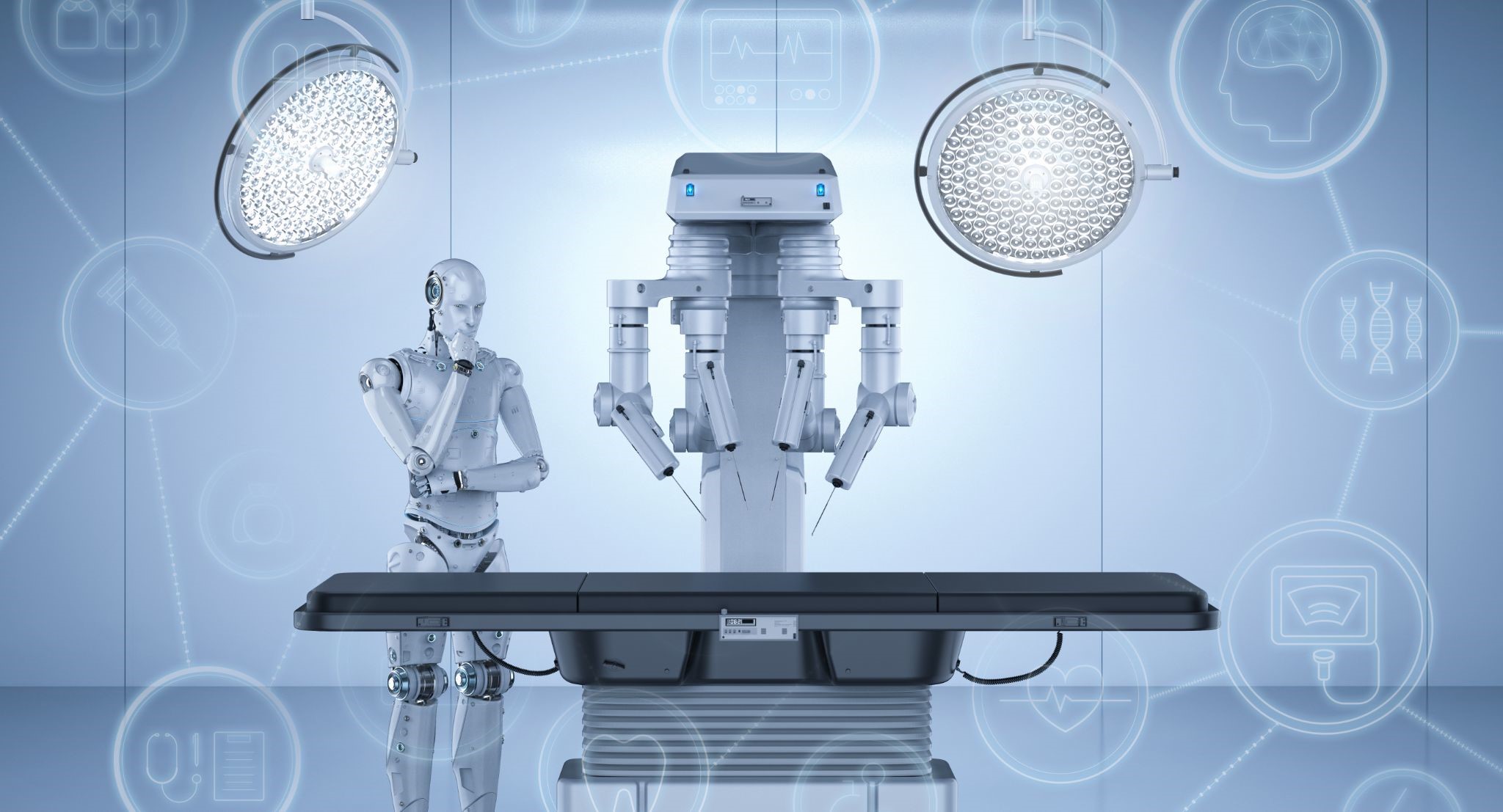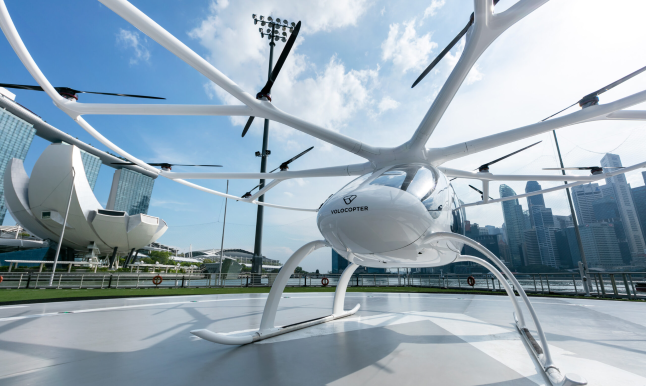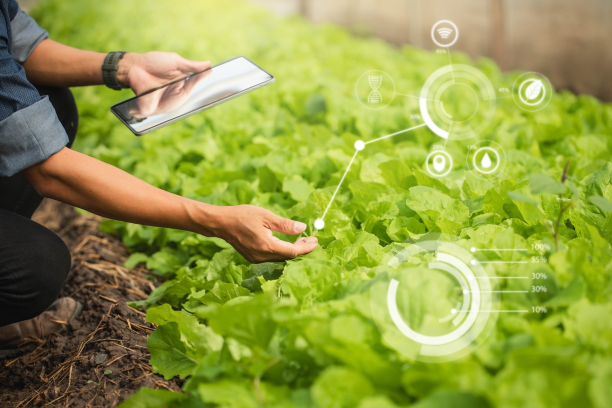
Intrigued by the notion of remote surgery, or getting around the city in a flying taxi? The possibilities of 5G are endless, especially within the STEM industries, where technology and automation are driven towards innovating for a better future.
5G introduces a realm of opportunities thanks to its ultra-fast speeds, ultra-high density, and ultra-low latency. But really, how do these benefits translate to applications for the STEM industries?
With Singapore Science Park as Singapore’s largest 5G smart estate trial site, let’s take a look at the potential opportunities and new technologies that could stem from the power of 5G within the STEM industries.
From healthcare, aerospace engineering and transportation, to agricultural and food production, here are some of the use cases that the world has been working on, to harness the potential of 5G. Keep your eyes peeled as we uncover some of the most interesting innovations, thanks to 5G’s capabilities, starting from remote surgeries.

In the medical industry where every millisecond counts, low latency communications is essential to ensure success in life-or-death situations.
Imagine a surgeon who has full access to real-time transmission of vitals, a complete 360-degree ultra-high-definition view of the wound, and a trusted steady hand with robots. The advent of high-speed 5G makes robot-assisted surgery and cross-border healthcare options a reality, even amidst on-going travel lockdowns.
The first ever 5G remote surgery was performed in China on a patient suffering from Parkinson’s, even though he was 2,400km away! Now, that’s a game changer, especially since borders are closed and access to healthcare may not be as convenient as before.
The ground-breaking 3-hour procedure to operate a deep brain stimulation implant was hailed a success with the doctor manipulating his instruments using a computer in Hainan and the robots executing his commands in real-time on the patient, based all the way in Beijing.
Faster 5G network speeds allowed the doctors to engage remotely with the patient without worry of disconnection. The lag time between devices is only just 2 milliseconds on the 5G network, as compared to about a 2-second lag on 4G. To provide better context, a blink of an eye takes approximately 300 milliseconds!
Speaking of robotic technology in the medical field, Johnson & Johnson at Ascent, has also been making waves to tap on the future of telehealth and remote surgeries with its new robot-assisted surgery system, Ottava. What’s so great about this system is that the robot has six (!) arms for greater control and flexibility when it comes to digital surgeries. How’s that for a reliable robotic surgeon?
While Ottava may not be in the market anytime soon, the new age robot aims to transform the industry with its ability to perform a diverse range of procedures with various combinations of its 6 arms across surgical specialities from abdominal, chest to endoscopy and vascular interventions - now that’s the future of digital surgeries.

Photo Credit: Volocopter
Aside from MedTech leveraging autonomous technology, did you know that 5G also plays a critical role in influencing and strengthening the capabilities of the future of driving? Road rage may soon become a thing of the past as we prepare for a future with less cars on the road and more taxis up in the sky!
Imagine booking a flying drone taxi via your smartphone and hopping on a vertical take-off to get to your destination. That’s the future of sustainable urban transportation, engineered by aerospace technology. No more contending with traffic, as you arrive in style with an amazing bird’s eye view of the city – great for date nights, and family fun!
This could be the reality of Singapore’s transport ecosystem come 2022, with the Economic Development Board (EDB), Civil Aviation Authority of Singapore (CAAS), Ministry of Transport (MOT), and German start-up Volocopter, joining forces to ensure that our Urban Air Mobility plan takes off. Not only will flying taxis ease road congestion, it may also provide a new boost for tourism with a scenic route in the works over Singapore’s southern waters.
But as with every autonomous mode of transport, the question often lies in its safety. The answer lies in 5G – 5G in flying taxis allows the system to identify blind spots and to avoid obstacles in the air, while downloading real-time flight data to enhance performance and safety.
This is where Denso, a leading global mobility supplier at The Aries, is shaping the future of transportation. Denso, together with KDDI, are researching 5G's use in automated driving to achieve safe and secure mobility with a curated 5G test course based in Tokyo. The course will tap on in-vehicle cameras and roadside sensors based on 5G high-speed, large-capacity communication to verify the technology driving autonomous vehicles. Who needs a driving license now with safer, remote driving technology?
With Singapore looking to implement autonomous vehicles in the near future, such testing will be critical for us to keep our roads safe for all! Fun fact - the first ever self-driving vehicle approved for public road testing at one-north in July 2015 was from A*STAR.

Beyond autonomous technologies like robots for remote surgeries and flying taxis, the Internet of Things (IoT) is key to transforming the way we manage our resources and food.
How many of us are guilty of questioning where our food comes from in a bid to make healthier choices? With IoT and 5G, now your questions have answers in farming transparency!
Imagine having full and transparent details of where your steak dinner comes from; what the cows fed on, to how they were produced from field to fork. That’s the power of 5G-enabled transparency in the modern agricultural and food production era.
This is where precision farming comes in. Precision farming is at the core of this ecosystem, where data-driven techniques are adopted for operational excellence to capture as much data as possible through sensors, cameras, and drones, powered by 5G through its low-latency and high-throughput data transfer. At every stage of the farming process, farmers can know exactly what each crop needs to achieve the best result with minimal wastage, such as the amount of light needed. More power to the farmers, and more transparency to us- hurray!
When it comes to light in farming, it’s a crucial element for successful growth of our greens. The amount of light will affect their quality and taste, hence striking the right balance is key. While 5G has yet to be fully adopted and implemented in Singapore, A*STAR’s Agritech and Aquaculture Horizontal Technology Programme Office, has been identifying new technologies and solutions to bolster sustainable farming in Singapore, and its recent innovative research is in sustainable hybrid lighting systems.
This system leverages both natural sunlight and artificial lighting to improve crop yield, while optimising the amount of light across various colours to achieve optimal photosynthesis rates, thereby reducing energy consumption!
If you didn’t already know, Singapore has put a renewed focus on sustainable farming in a bid to strengthen our position in food security and aims to produce 30% of our nutritional needs locally by 2030.
And if you’re interested in growing your own plants and produce, we have our own community garden within Singapore Science Park at 5 Science Park Drive that boasts over 6 species of plants, from Pandan Leaves, Averrhoa Bilimbi, Lemongrass, Chillies, Limes to Lady Fingers. Reach out to us to lend a green hand to our plants and produce!
There are so many new and exciting possibilities and innovative technologies that 5G can bring. In Singapore Science Park, we’re excited to share that there are many innovative products that are developed here - from Mobile Disinfection Robot by Weston Robots to AIoT automation platform for farms to improve profitability and overcome manpower shortage.
Going above and beyond technologies, businesses can also leverage strategic insights derived by IoT within an integrated ecosystem to increase productivity and attain long-term cost savings.
The transformational power of 5G is indisputable, and STEM organisations who tap on its potential today will be well-positioned to stay ahead. We’re excited to be a 5G enabler in setting the stage for our community to spark, create, and implement innovative ideas to make a positive difference in the world.
Follow us on Facebook @SingaporeSciencePark and Instagram @yourWorkplaceCommunity, or even subscribe to our newsletter - your Workplace Community to receive latest updates on our tenant engagement activities.